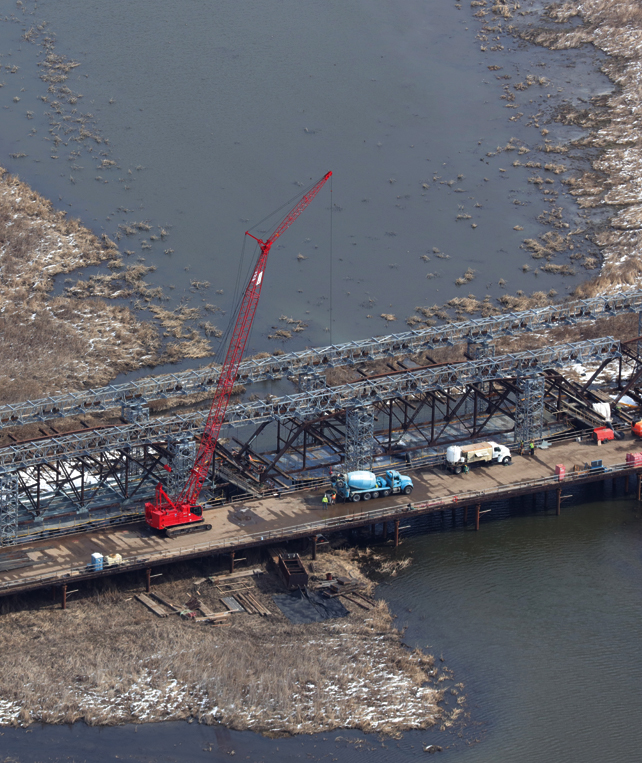
Reusable steel systems provide support during the dismantling and rehabilitation phase of the Old Cedar Avenue Bridge in the Minnesota Valley National Wildlife Refuge
The Old Cedar Avenue Bridge (also called the Long Meadow Bridge), built in 1920, spans a narrow section of Long Meadow Lake in Bloomington, Minnesota and the Minnesota Valley National Wildlife Refuge. At the time of its construction, the structure was the longest steel highway bridge with concrete flooring in the state. Because of its unusual design and structure the bridge was added to the National Register of Historic Places in 2013.
Despite periodic repairs, however, the condition of the bridge deteriorated and it was closed to vehicular traffic in 1993 and to pedestrians and cyclists in 2002. The bridge was heavily used by bicycle commuters, recreational enthusiasts, and visitors to the wildlife refuge and nearby Fort Snelling State Park.
With no connection between existing trail systems on either side of the span, it was necessary for the public to make a minimum four-mile detour to reconnect with trails. Although replacement options were considered to restore non-motorized traffic crossing, rehabilitation was chosen due to the bridge’s historic status.
The bridge is important not only to Bloomington and to the U.S. Fish and Wildlife Service, the owner and operator of the wildlife refuge, but also to the Minnesota Department of Natural Resources, for state park and trail connections, Dakota and Hennepin Counties, and other neighboring cities.
Acrow Bridge supplied four modular steel towers to support two of their trusses which provided temporary support of the existing steel trusses during the dismantling and rehabilitation phase of the project. Each support truss was a 700XS Acrow panel bridge, 170ft long, in a 3-span continuous configuration over a pair of towers, with a center span of 85 feet. The side truss construction was Single Single (SS) and utilized special, narrow transoms to support jacking beams at the hangar locations. As the in-place restoration work on each of the five spans of the original bridge was completed, the 3-span Acrow structure was “leapfrogged” forward as construction progressed. In addition to providing support, the Acrow truss systems provided access for workers and construction equipment.
“The rental of our components for this large-scale restoration allowed the project to move forward safely and on schedule,” said Bill Killeen, President and CEO. “It has been gratifying to have been a part of this important project to restore a historically significant bridge with an innovative use of the Acrow truss system.”









